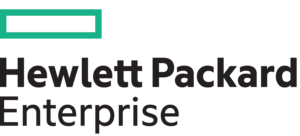The following CyberSecurity Dos and Don’ts help remind us of actions we must take to remain vigilant.
DO use hard-to-guess passwords or passphrases. A password should have a minimum of 10 characters using uppercase letters, lowercase letters, numbers, and special characters. To make it easy for you to remember but hard for an attacker to guess, create an acronym. For example, pick a phrase that is meaningful to you, such as “My son’s birthday is 12 December 2004.” Using that phrase as your guide, you might use Msbi12/Dec,4 for your password.
DO use different passwords for different accounts. If one password gets hacked, your other accounts are not compromised.
DO keep your passwords or passphrases confidential. DON’T share them with others or write them down. You are responsible for all activities associated with your credentials.
DON’T leave sensitive information lying around the office. DON’T leave printouts or portable media containing private information on your desk. Lock them in a drawer to reduce the risk of unauthorized disclosure.
DON’T post any private or sensitive information, such as credit card numbers, passwords or other private information, on public sites, including social media sites, and DON’T send it through email unless authorized to do so. DO use privacy settings on social media sites to restrict access to your personal information.
DO pay attention to phishing traps in email and watch for telltale signs of a scam. DON’T open mail or attachments from an untrusted source. If you receive a suspicious email, the best thing to do is to delete the message and report it to your manager and to your IT Support.
DON’T click on links from an unknown or untrusted source. Cyber attackers often use them to trick you into visiting malicious sites and downloading malware that can be used to steal data and damage networks.
DON’T be tricked into giving away confidential information. It’s easy for an unauthorized person to call and pretend to be an employee or business partner.
DON’T respond to phone calls or emails requesting confidential data.
DO destroy information properly when it is no longer needed. Place paper in designated confidential destruction bins throughout the office or use a crosscut shredder. For all electronic storage media, consult with your IT staff.
DO be aware of your surroundings when printing, copying, faxing or discussing sensitive information. Pick up information from printers, copiers, or faxes in a timely manner.
DON’T install unauthorized programs on your work computer. Malicious applications often pose as legitimate software.
DON’T plug in portable devices without permission from your agency management. These devices may be compromised with code just waiting to launch as soon as you plug them into a computer.
DO lock your computer and mobile phone when not in use. This protects data from unauthorized access and use.
DON’T leave devices unattended. Keep all mobile devices, such as laptops and cell phones physically secured. If a device is lost or stolen, report it immediately to your manager and ISO/designated security representative.
DO remember that wireless is inherently insecure. Avoid using public Wi-Fi hotspots. When you must, use agency provided virtual private network software to protect the data and the device.
DON’T leave wireless or Bluetooth turned on when not in use. Only do so when planning to use and only in a safe environment.
DO report all suspicious activity and cyber incidents to your manager and designated security representative.
Remember – cyber security is everyone’s responsibility!





